On Cedar Key, researchers from the University of Florida have brought in sand, put in marsh plants and used artificial reefs to encourage the growth of oyster beds offshore.
Octavio Jones for NPR
hide caption
toggle caption
Octavio Jones for NPR
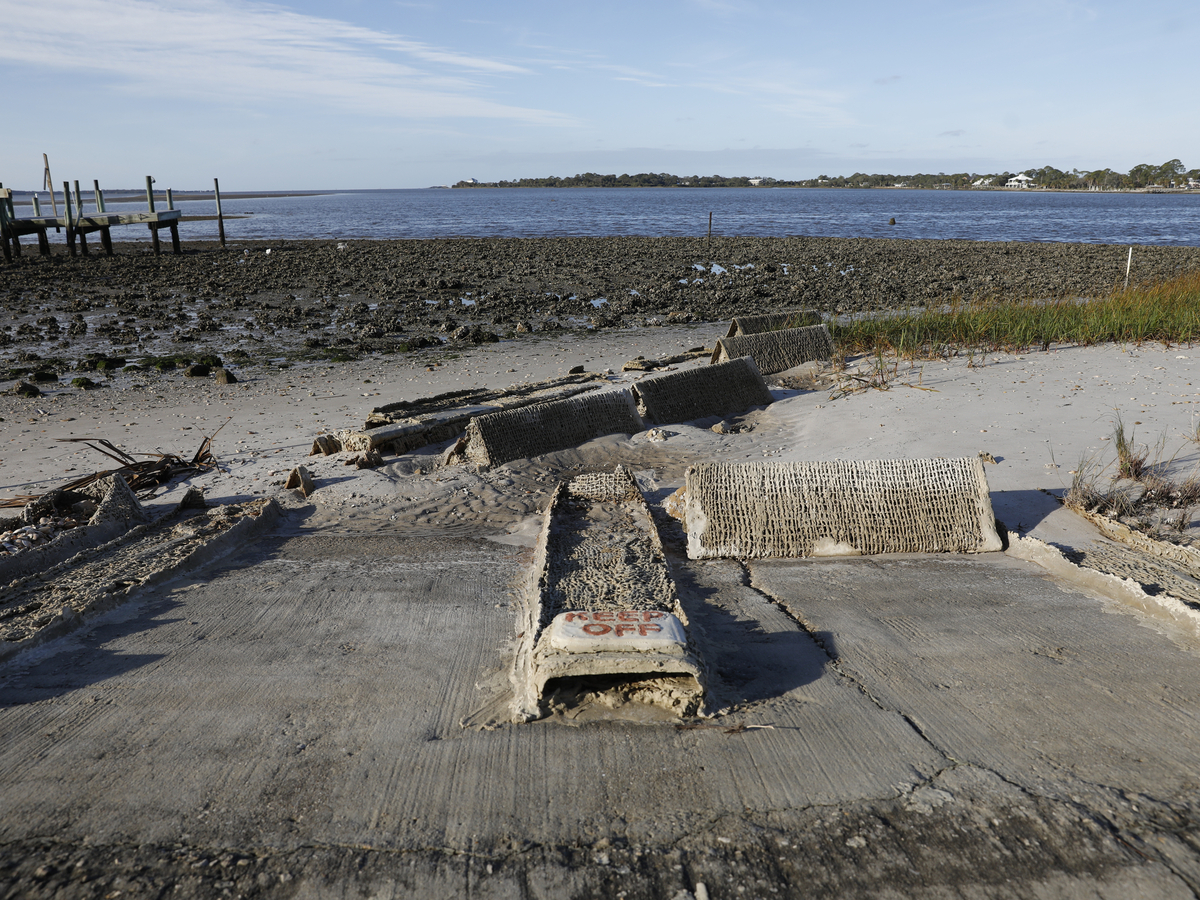

On Cedar Key, researchers from the University of Florida have brought in sand, put in marsh plants and used artificial reefs to encourage the growth of oyster beds offshore.
Octavio Jones for NPR
CEDAR KEY, Fla. — When Hurricane Idalia slammed into Florida’s Gulf Coast in August, one of the hardest hit areas was Cedar Key.
A nearly 7-foot storm surge battered the small fishing community, flooding a third of the buildings on the island. In a new report, the National Oceanic and Atmospheric Administration says Idalia caused an estimated $3.6 billion in damage, most of it in Florida’s Big Bend region. But on Cedar Key, when the water receded, scientists found some good news amid all the damage.
Nature-based “living shoreline” projects built to protect roads, buildings and other structures were relatively undamaged.
On Cedar Key over the past several years, a team of researchers from the University of Florida has used a variety of tools to mimic nature. Instead of building seawalls and jetties, they’ve brought in sand, put in marsh plants and used artificial reefs to encourage the growth of oyster beds offshore.
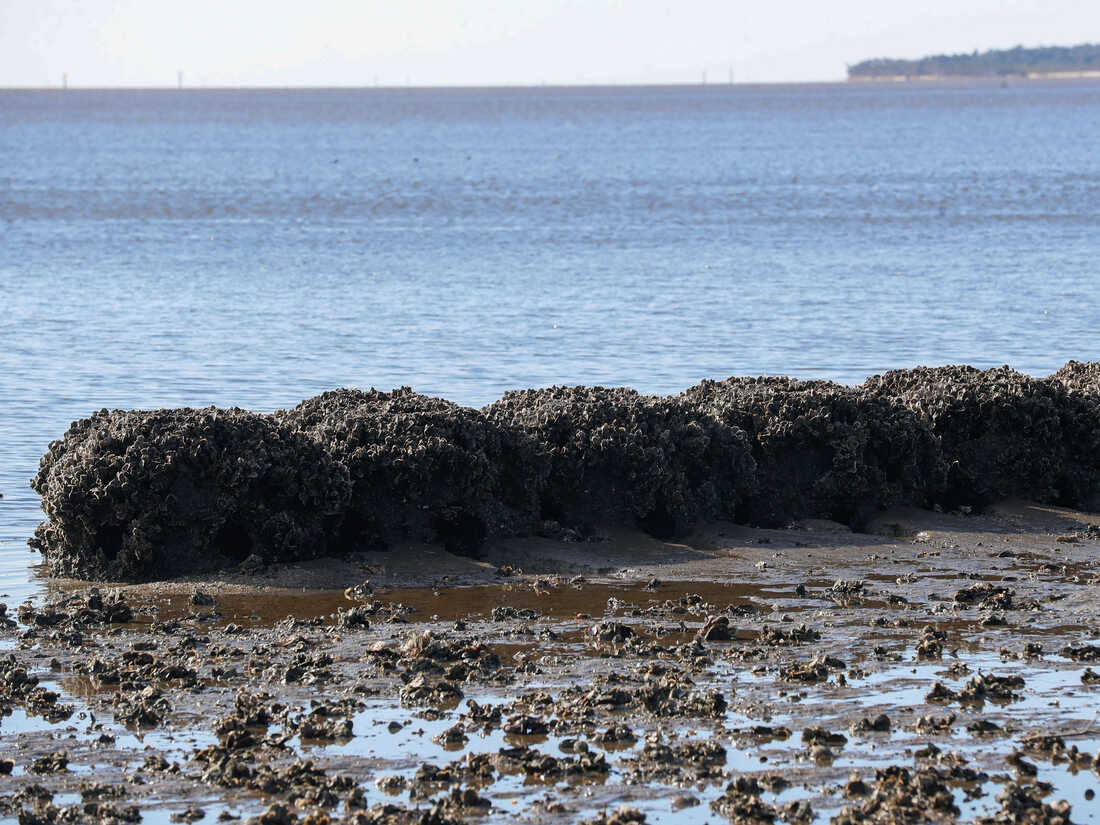

Near Airport Road on Cedar Key, large concrete reef ball structures have been installed to break waves and encourage oysters.
Octavio Jones for NPR
hide caption
toggle caption
Octavio Jones for NPR
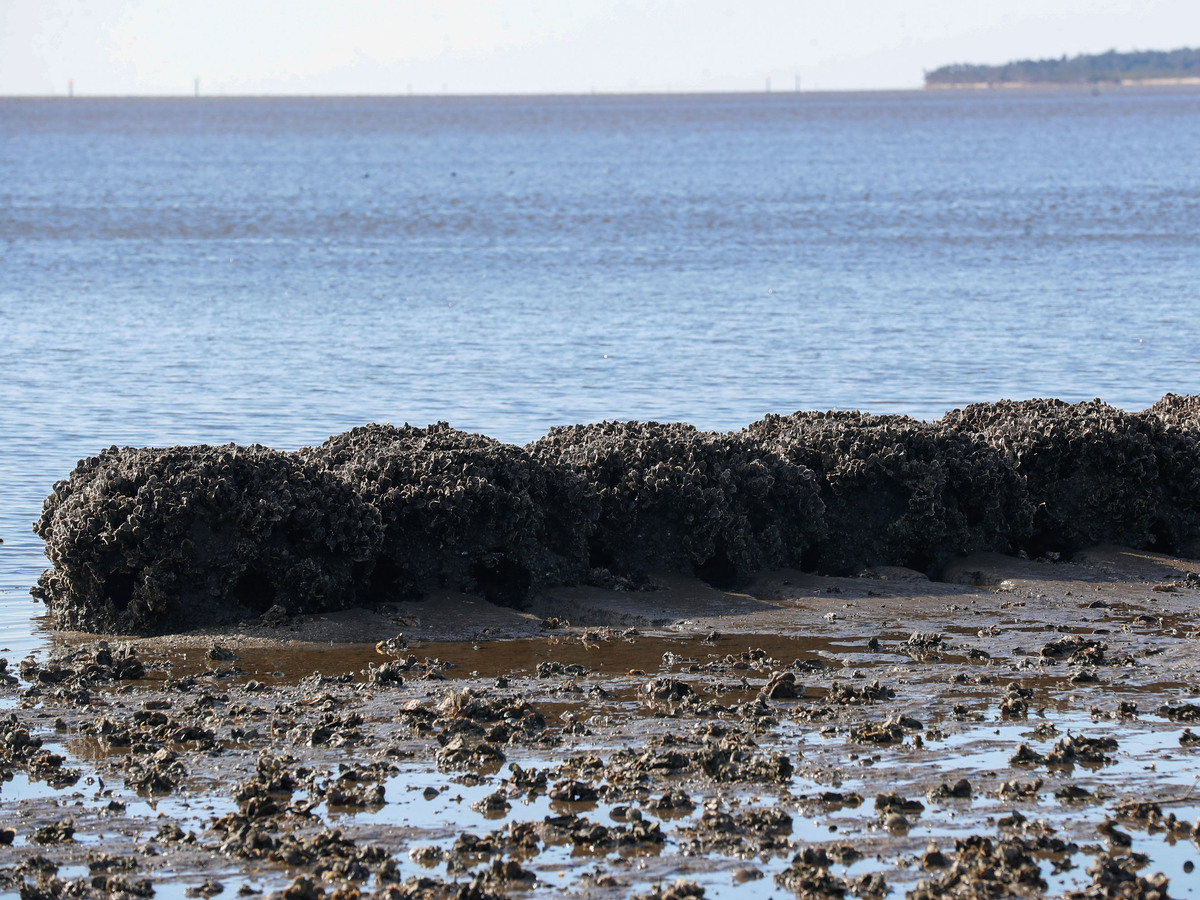

Near Airport Road on Cedar Key, large concrete reef ball structures have been installed to break waves and encourage oysters.
Octavio Jones for NPR
People who live on the tiny island year-round are no strangers to storm surge and flooding. Because it’s so low and close to the water, the town sees flooding during even small storms. In 2016, Hurricane Hermine brought then-record storm surge and flooding. Savanna Barry, an extension agent and researcher with the University of Florida, says that with that history, the devastation of Hurricane Idalia wasn’t unexpected. “Shocking’s not really the right word, but certainly overwhelming,” she says. “But we were happy to see the living shorelines had relatively little damage.”
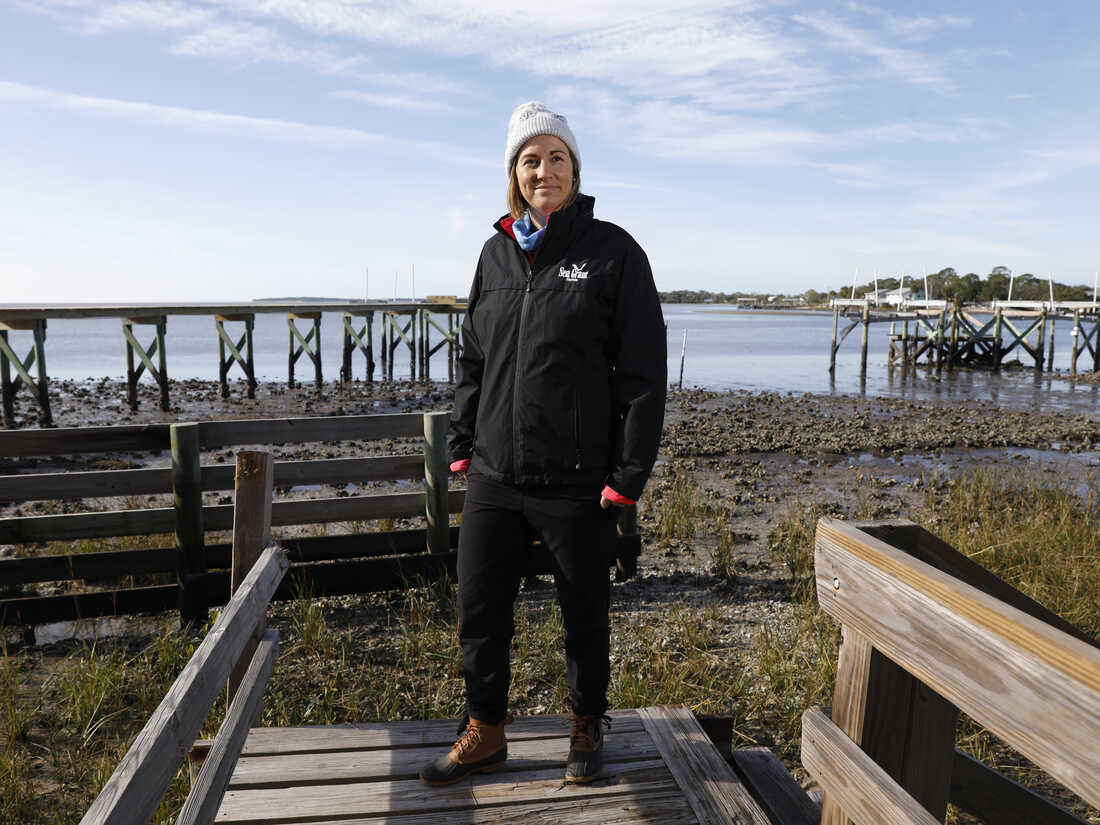

Extension agent and University of Florida researcher Savanna Barry helps oversee the newest living shoreline project in Cedar Key near G Street.
Octavio Jones for NPR
hide caption
toggle caption
Octavio Jones for NPR


Extension agent and University of Florida researcher Savanna Barry helps oversee the newest living shoreline project in Cedar Key near G Street.
Octavio Jones for NPR
Near the island’s western edge recently, Barry checked up on one of the living shoreline projects. Just a day before this visit, a storm system in the Gulf brought high winds, damaging surf and minor flooding to this part of the island. “But you see this debris line, how it bends towards this vegetated area,” Barry says. “That’s really showing you how this is affecting that wave power.”
That’s what living shorelines do. They don’t reduce the height of a storm surge or stop the waves from coming ashore. But they absorb and reduce the energy of incoming waves. Barry says that provides significant protection to roads, buildings and other structures onshore. “Even if they do still get flooded, they may not get as battered by wave energy,” she says.


After Hurricane Idalia, researchers found that living shoreline projects helped protect buildings on Cedar Key like this hotel by reducing incoming wave energy by 15% to 20%.
Octavio Jones for NPR
hide caption
toggle caption
Octavio Jones for NPR


After Hurricane Idalia, researchers found that living shoreline projects helped protect buildings on Cedar Key like this hotel by reducing incoming wave energy by 15% to 20%.
Octavio Jones for NPR
Three living shoreline projects have been created in Cedar Key. In August, as Hurricane Idalia strengthened in the Gulf and headed toward Florida, researchers placed wave gauges onshore and offshore to monitor the height and power of the storm surge. The gauges showed the living shorelines significantly reduced the height and power of the waves reaching the shore.


Scientists and volunteers plant small plugs of marsh grass that, if left undisturbed for a few years, grow into a dense “living shoreline.”
Octavio Jones for NPR
hide caption
toggle caption
Octavio Jones for NPR
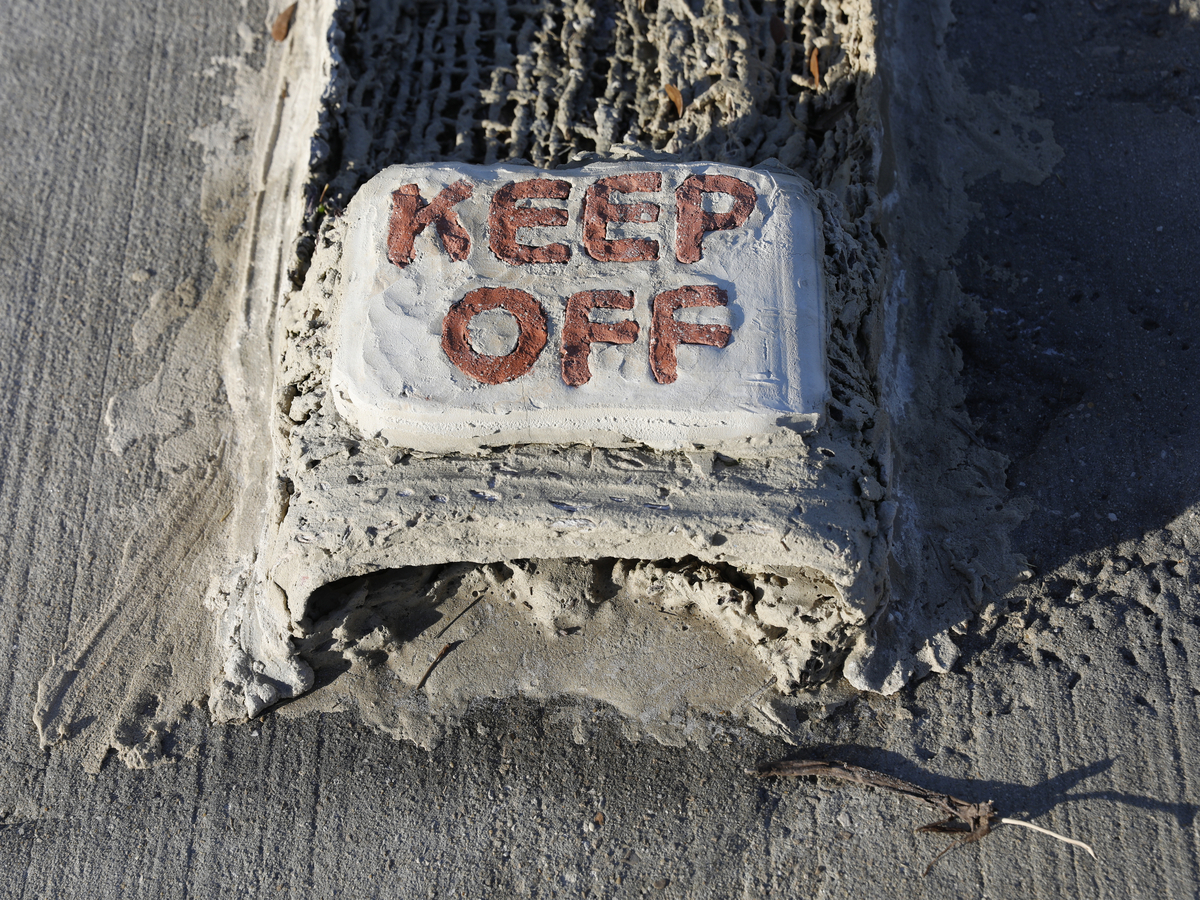

Scientists and volunteers plant small plugs of marsh grass that, if left undisturbed for a few years, grow into a dense “living shoreline.”
Octavio Jones for NPR
Barry says, “We saw that even at the highest water levels, this project was reducing incoming wave energies between 15 and 20%.”
And unlike docks, seawalls and other human-made structures, University of Florida wetlands ecologist Mark Clark says their projects came though the hurricane largely unscathed. “When the water receded and we looked at these shorelines,” he says, “they were minimally impacted by the actual event.”
Throughout Cedar Key, nearly six months after the storm, buildings and docks are being repaired and rebuilt. On the living shorelines, nature is doing the repairs as oyster reefs repopulate and mangroves and marsh grasses regrow.


Marsh grasses help armor the shoreline with a dense root system that holds onto the soil. As water moves over it, the grass bends and flexes, absorbing wave energy.
Octavio Jones for NPR
hide caption
toggle caption
Octavio Jones for NPR


Marsh grasses help armor the shoreline with a dense root system that holds onto the soil. As water moves over it, the grass bends and flexes, absorbing wave energy.
Octavio Jones for NPR
Marsh grasses, Barry says, play a key role in protecting the shore. As waves break over them, she says the dense root systems hold on to the soil. “They create kind of an armoring of their own underneath the soil with a very, very dense web,” she says. “Then also, as the water moves across them, they bend and flex. That bending and flexing is absorbing wave energy.”
Marsh grasses also trap new sand, slowly increasing the elevation. At another living shoreline project on Cedar Key, that increased elevation helped protect an important road from being washed out in Idalia — something that had happened in a previous storm.
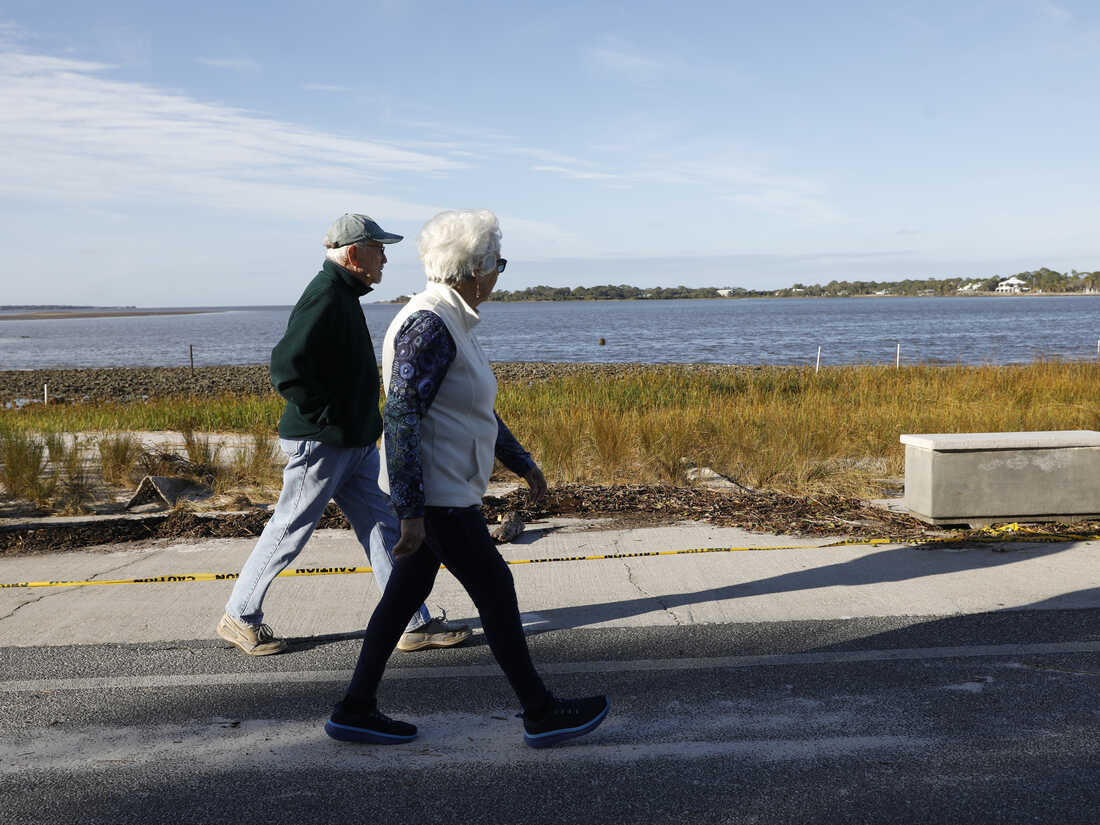

There’s growing public support for nature-based projects in Cedar Key. Some private landowners have begun installing living shoreline projects on their properties.
Octavio Jones for NPR
hide caption
toggle caption
Octavio Jones for NPR
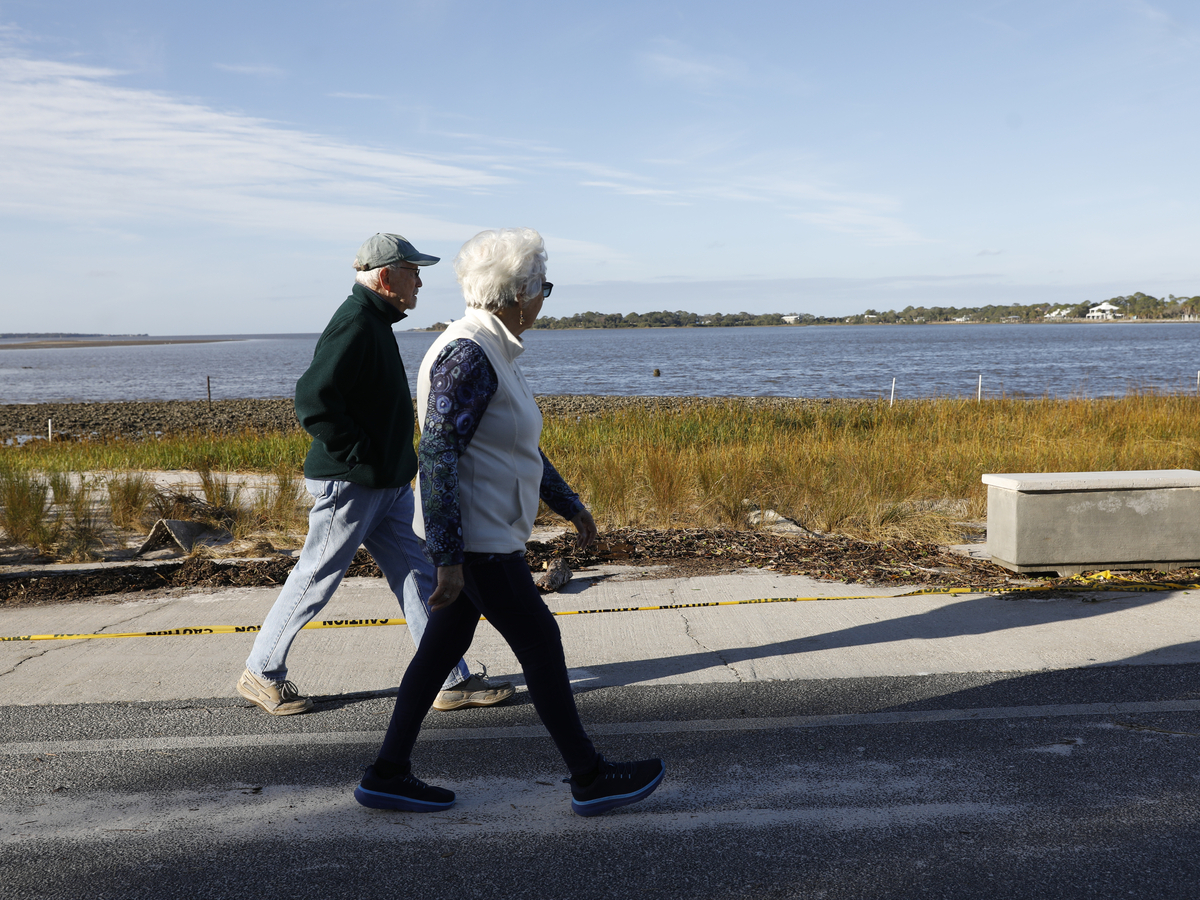

There’s growing public support for nature-based projects in Cedar Key. Some private landowners have begun installing living shoreline projects on their properties.
Octavio Jones for NPR
Living shorelines have been advocated for decades as an alternative to human-made shore-hardening measures. Sea walls, common in most coastal areas, cost more in the long run. They often fail when they’re overtopped in storms. And they increase coastal erosion in adjacent areas that don’t have them.
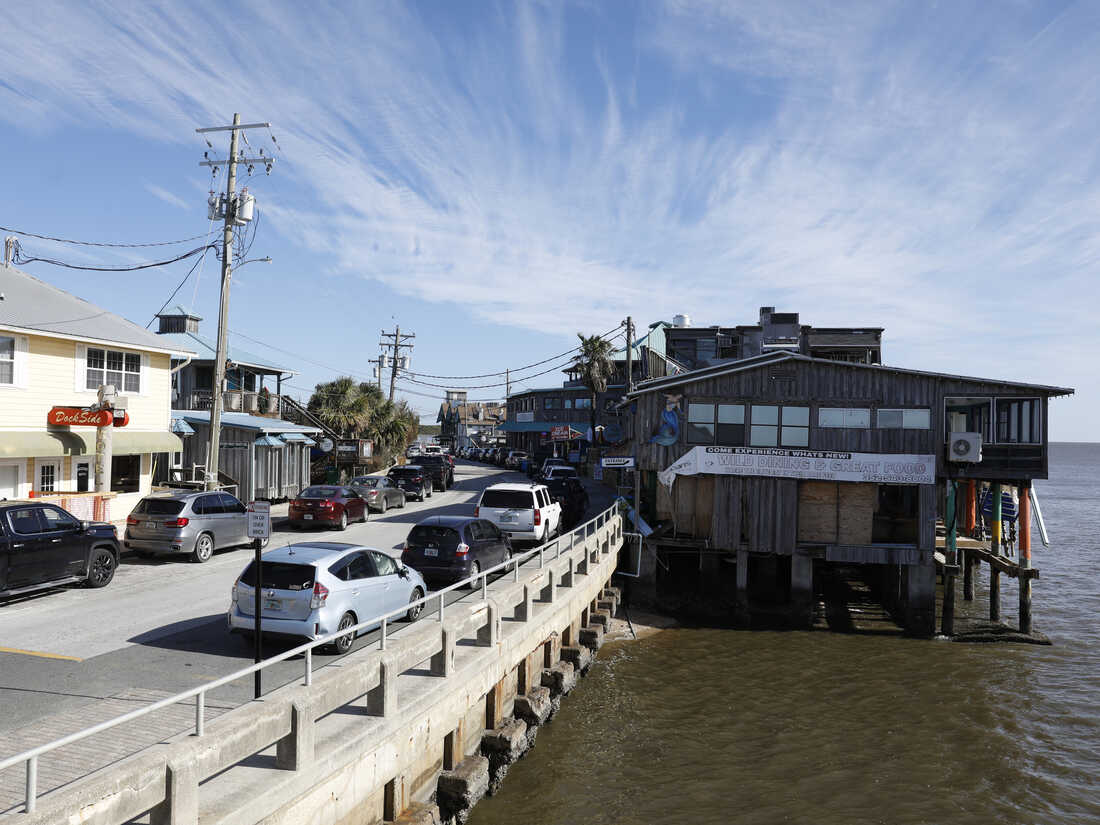

Rebuilding is still underway on Dock Street in Cedar Key. Businesses there took some of the worst damage in Hurricane Idalia.
Octavio Jones for NPR
hide caption
toggle caption
Octavio Jones for NPR
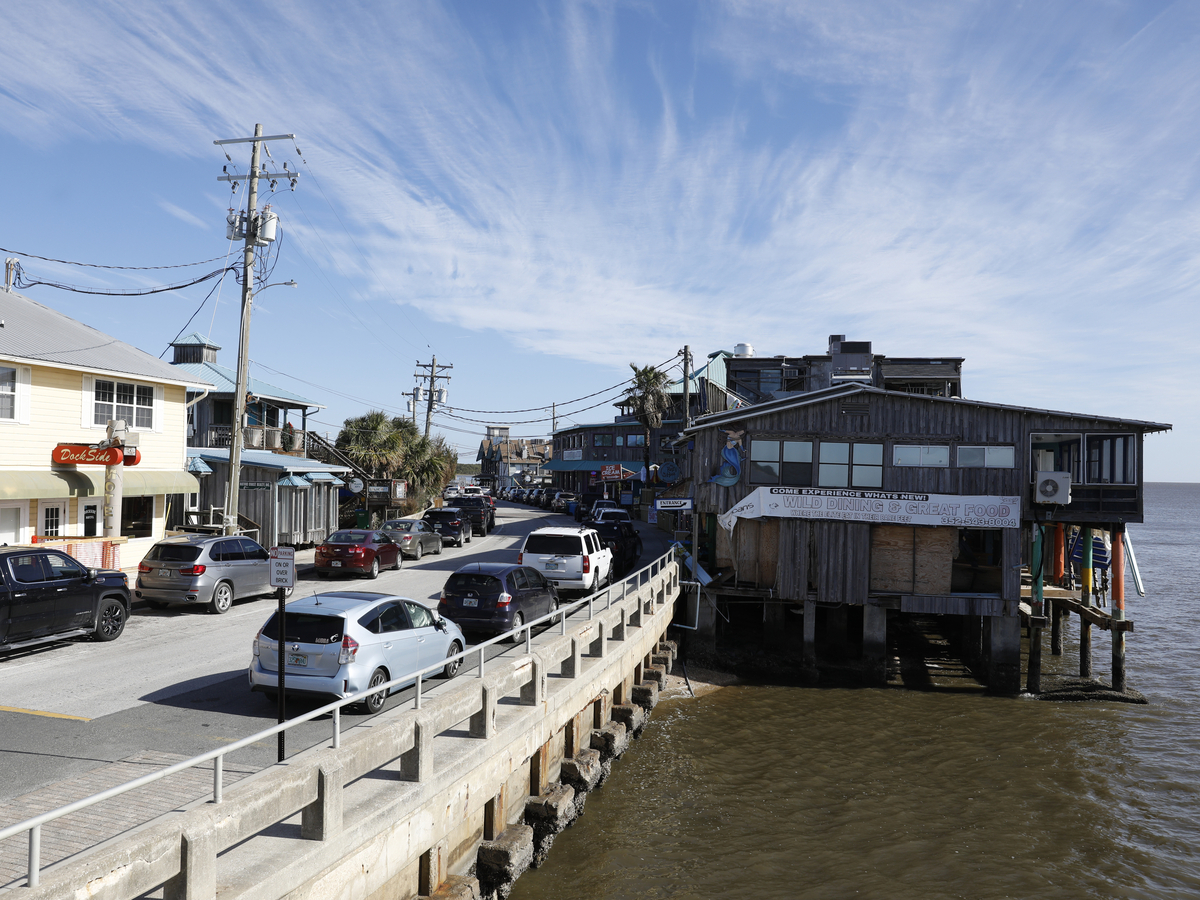

Rebuilding is still underway on Dock Street in Cedar Key. Businesses there took some of the worst damage in Hurricane Idalia.
Octavio Jones for NPR
Living shoreline projects are more resilient. They improve water quality and help provide habitat for plants and sea life. But in Florida and elsewhere, Barry says living shorelines have been slow to catch on. “It may be hard for some people to believe that nature can be a defense,” she says. “I … think it’s just human nature to trust a wall more than something else.”
In Cedar Key, because residents live so close to the water, Barry says there’s public support for these nature-based projects. Working with the town, the University of Florida developed a master plan to manage the island’s shoreline. And some private landowners have begun installing living shoreline projects on their properties.


On Cedar Key, because it’s so low and close to the water, the town sees flooding in even small storms. A third of the buildings on the island were flooded in Hurricane Idalia.
Octavio Jones for NPR
hide caption
toggle caption
Octavio Jones for NPR


On Cedar Key, because it’s so low and close to the water, the town sees flooding in even small storms. A third of the buildings on the island were flooded in Hurricane Idalia.
Octavio Jones for NPR
This story originally appeared on NPR


